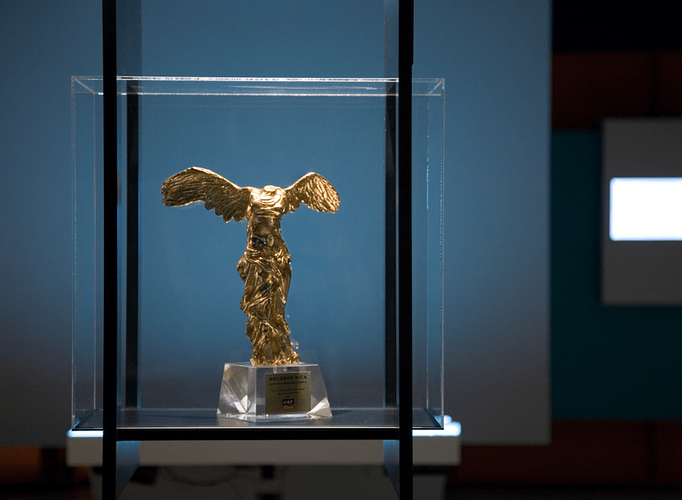Upon learning that she received an honorable mentioned in the Ars Electronica “hybrid arts” prize category, artist and bio-hacker Heather Dewey-Hagborg realized that the festival’s top prize has been awarded almost exclusively to male artists–the so-called Golden Nica has been given 9 out of 10 times to men since its inception 29 years ago. Read Dewey-Hagborg in collaboration with artists Addie Wagenknecht, Camilla Mørk Røstvik and Kathy High in partial below, or in full via the Guardian here.
Today is the last day of the annual Ars Electronica festival, held in Linz Austria. Over the past 37 years it has aimed to provide an environment of “experimentation, evaluation and reinvention” in the area broadly defined as art, technology and society. Its top award, the Golden Nica, honours forward-thinking work with broad cultural impact, in an effort to “spotlight the ideas of tomorrow.” However, the prize, hailed by many in the field as the top honour for artists working with science and technology, has a gender problem.
This was uncovered by artist Heather Dewey-Hagborg after she received an honourable mention in the Hybrid Arts Category last year. The prize’s online archive showed that throughout its 29-year history, 9 out of 10 Golden Nica have been awarded to men.
It was only weeks before the festival and her work was already shipped. Unable to withdraw, Heather began discussing the problem with other artists to develop a plan. A painstaking review of the statistics confirmed that more than 90% of winners self-identified as male. Although fewer women had applied, there was no shortage of great female artists among the applicants: the archive included internationally recognized women such as Rebecca Gomperts, Lillian Schwartz, Mariam Ghani, Pinar Yoldas, Daisy Ginsberg, Holly Herndon, Kaho Abe, and Ai Hasegawa. In response, Heather and the other artists developed a social media campaign: #KissMyArs.
The campaign spread quickly, generating a host of strong responses. While many were supportive, some voiced disagreement, including 2013 Golden Nica winner Memo Atken. He commented on what he viewed as the campaigners’ misrepresentation of statistics, focusing only on the winners rather than diversity of submissions. After being confronted with a significant backlash to these comments on social media, pointing out among other things that the prize was not a lottery and there was no shortage of impressive female applicants, Atken apologised.
On the flip side artists Golan Levin and Mushon Zer-Aviv critiqued the campaign as not being radical enough for their liking and calling for a “feminist revolution across media arts.”
In an insular field like art and technology, making a statement means that you risk your career. Heather Dewey-Hagborg writes, “My participation in this campaign stemmed from a frustration that this highly esteemed prize was one designed for men, and others need not apply. As women in art and tech we are consistently under-recognised, under-funded, and written out of history. We are made to feel that our work must simply not be as good as that of our male peers, and if only we made better work we would attain the same accolades and accomplishments as they did. Last year I finally realised that this was bullshit.”
Addie Wagenknecht, a collaborator on the campaign, became aware of issues of gender bias in the tech industry when she joined a game development company out of college. Constantly surrounded by “a few thousand men” at game conferences started to feel suffocating, although a decade later she felt a shift in attitudes, not only toward women but also people of colour and from LGBTQ communities.
Nevertheless, Addie sees Ars Electronica’s top prize, as “the perfect metaphor of how women are represented”. It is a golden sculpture of an idealised female form, with her head cut off: “I find the irony in the ‘award’ being of a headless woman, to speak volumes towards how we commodify women within the communities in which we claim to be honouring.” She sees the male-bias of the prize as connected to a larger systemic problem which excludes women from exhibitions, under-cuts and discounts women’s work in galleries, and ultimately cuts women out of the larger canon of contemporary art.
*Image of Golden Nica via Ars Electronica
